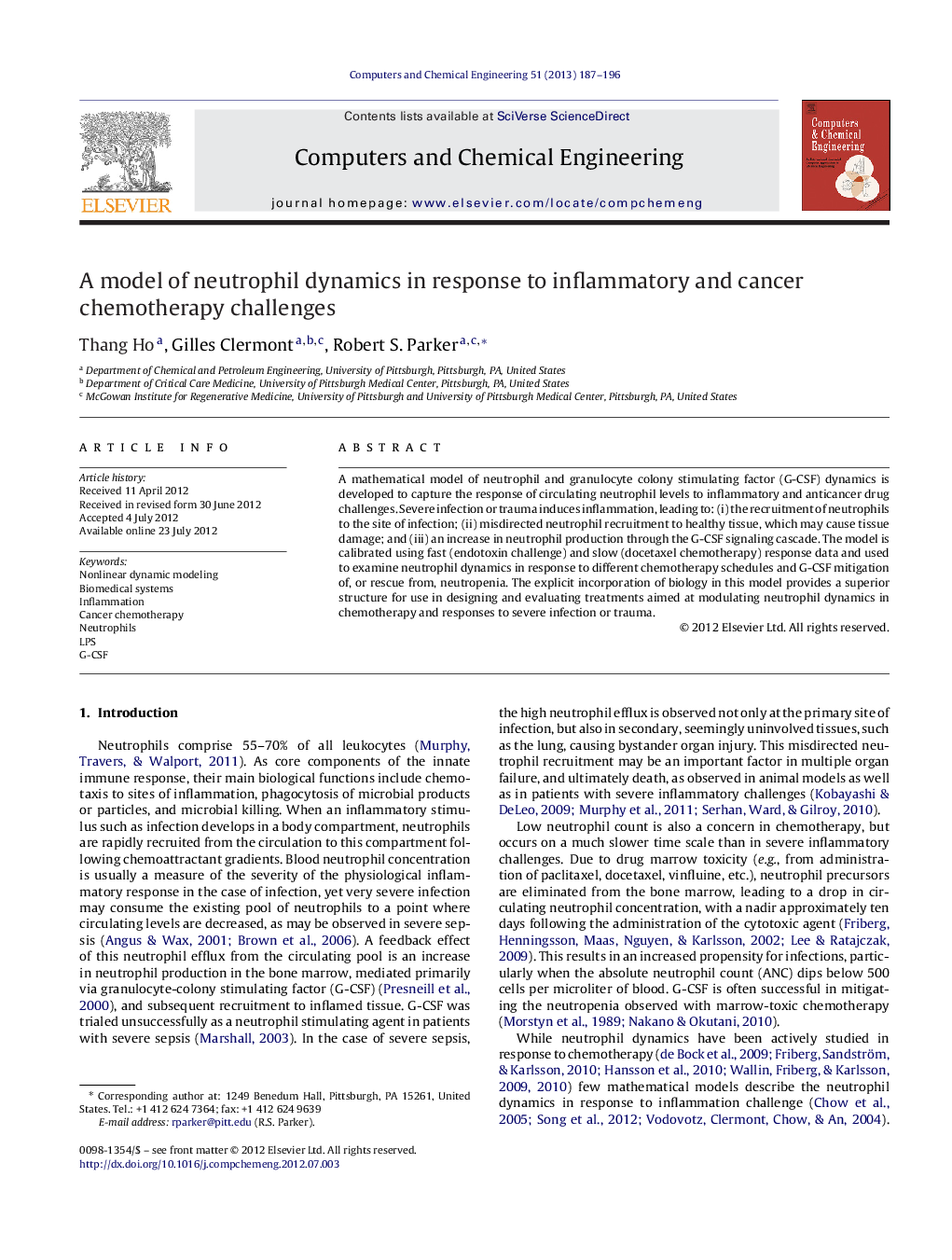| Article ID | Journal | Published Year | Pages | File Type |
|---|---|---|---|---|
| 172677 | Computers & Chemical Engineering | 2013 | 10 Pages |
A mathematical model of neutrophil and granulocyte colony stimulating factor (G-CSF) dynamics is developed to capture the response of circulating neutrophil levels to inflammatory and anticancer drug challenges. Severe infection or trauma induces inflammation, leading to: (i) the recruitment of neutrophils to the site of infection; (ii) misdirected neutrophil recruitment to healthy tissue, which may cause tissue damage; and (iii) an increase in neutrophil production through the G-CSF signaling cascade. The model is calibrated using fast (endotoxin challenge) and slow (docetaxel chemotherapy) response data and used to examine neutrophil dynamics in response to different chemotherapy schedules and G-CSF mitigation of, or rescue from, neutropenia. The explicit incorporation of biology in this model provides a superior structure for use in designing and evaluating treatments aimed at modulating neutrophil dynamics in chemotherapy and responses to severe infection or trauma.
► Biologically motivated model of neutrophil response to inflammation and chemotherapy. ► Model unifies “fast” (inflammation) and “slow” (cancer chemotherapy) dynamics. ► Includes granulocyte colony stimulating factor as key element of feedback.
